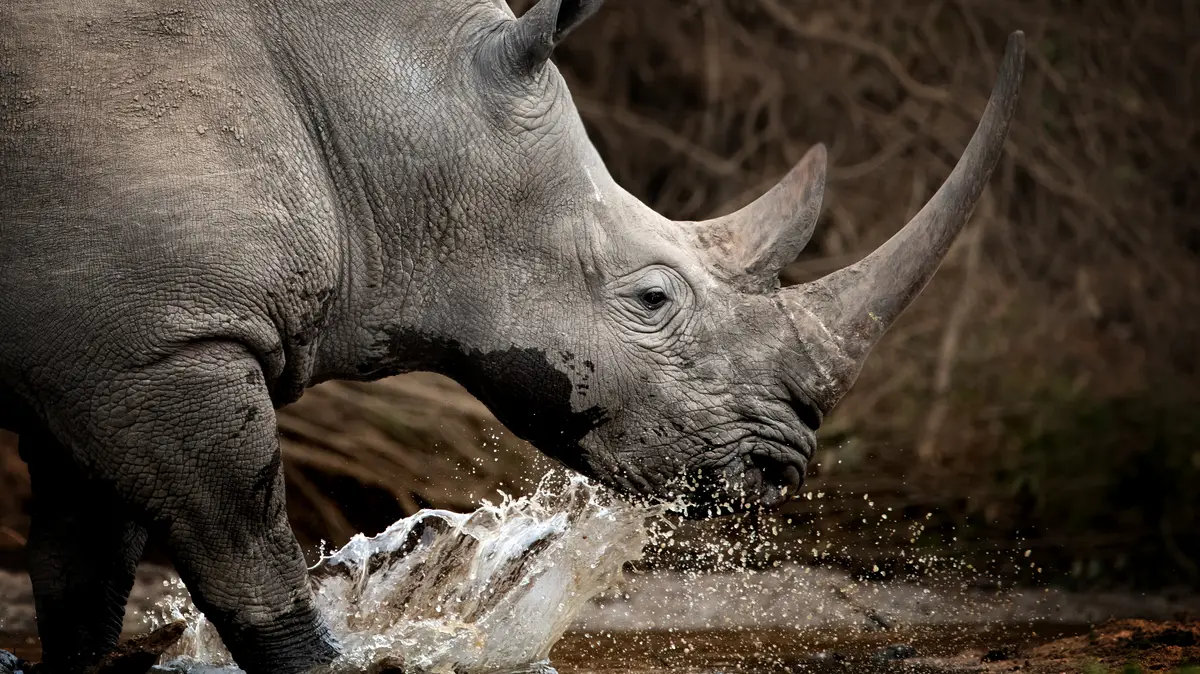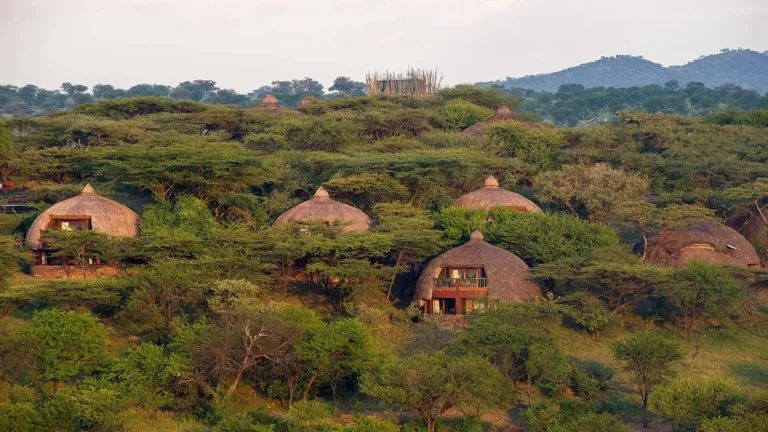Serengeti National Park
Explore Serengeti National Park
Nestled in northern Tanzania, Serengeti National Park stands as an epitome of Africa's natural splendor, revered globally for its unparalleled wildlife and breathtaking landscapes. Spanning over 14,750 square kilometers, this iconic park embodies the essence of an untamed wilderness where nature thrives undisturbed. Renowned for its sweeping savannahs, dotted with acacia trees and rocky outcrops, Serengeti offers a stunning backdrop for some of the most magnificent wildlife encounters on the continent.
At the heart of Serengeti's allure is the annual Great Migration, a spectacle that unfolds across its plains and savannahs. This awe-inspiring natural phenomenon sees millions of wildebeests, zebras, and gazelles embark on a cyclical journey in search of fresh grass and water, presenting visitors with a front-row seat to one of Earth's greatest wildlife shows. Beyond the migration, Serengeti is home to an impressive diversity of wildlife, including the renowned Big Five - lions, elephants, leopards, buffaloes, and rhinoceroses - as well as cheetahs, giraffes, hyenas, and countless bird species.
Beyond its wildlife, Serengeti's landscapes are equally captivating, ranging from expansive grasslands to dense forests along riverine corridors. The park's varied ecosystems support an intricate web of life, ensuring that every visit unveils new discoveries and unforgettable moments. Whether exploring the Seronera Valley, famed for its dense predator populations, or the Serengeti's western corridor, where the Grumeti River hosts dramatic river crossings during the migration, visitors are immersed in a timeless wilderness where the rhythms of nature dictate the pace of life.
Serengeti National Park Gallery









BEST SERENGETI SAFARI EXPERIENCES
You are one step away from experiencing the magnificence of Tanzania Safari Tours! Wetu Africa Adventures organizes the most memorable safaris. From the wild natural landscapes to the magnificent animals that roam the land, Tanzania is a destination for those seeking adventure.
Start From $2,145 pp
7 Days The Grumeti River
Migration
- Arusha, Western Serengeti, Central Serengeti and Ngorongoro Crater
Start From $1,050 Pp
4 Days Tanzania Luxury
Safari
- Arusha, Tarangire National Park, Serengeti, Ngorongoro Crater and Lake Manyara
Start From $3,000 pp
5 Days Serengeti Luxury
Safari
- Kilimanjaro Airport – Arusha Town,Serengeti National Park (Sasakwa airstrip)
Experience Our Recommended Tanzania
Safaris
Discover Accommodations in Serengeti.
Choose from the list of our compiled accommodations in Serengeti and customize them to fit your preferences.
-
When is the
best month to
travel to
Tanzania?
- When is the best month to travel to Tanzania?
- JAN
- FEB
- MAR
- APR
- MAY
- JUN
- JUL
- AUG
- SEP
- OCT
- NOV
- DEC
Tanzania in January
Tanzania experiences two rainy seasons and two dry seasons: the short dry season runs from late January to early March, and the long dry season from June to October. In between are the short rains of November to January and long rains from late March to May with April being an extremely wet and challenging month to get around…
Tanzania in February
The rains depends on your chosen location in Tanzania, while the northern parks are more likely to see dry spells, while the western parks remain rather wet throughout. February is definitely the best time of year to see wildebeest calves, with the migratory herds in full…
Tanzania in March
The Ngorongoro Highlands receive short and sharp rainfall in the late afternoon, leaving the mornings pleasant and generally dry for excellent game viewing.
Early March tends to be dry, although in some years the rains have been known to return early, so it can be wet. That said, seeing the bush turn from a tawny brown to green is a mesmerising sight in its own right. Also, with this being the start of the main rainy season it is unlikely that you would encounter enough rain to ruin your safari experience or to limit your mobility within the country to see and explore all the varied attractions…
Tanzania in April
If there is one month that is probably worth avoiding for a visit to Tanzania, then that would have to be the rain-soaked month of April. This is by far the wettest month of the year, as it falls in the midst of the long/heavy rains. While the rains predominantly come in the form of afternoon thunderstorms, it is not unusual to have big storms at night as well as some grey, drizzly days…
Tanzania in May
Early May is usually still very wet but, as the month progresses, things start to dry out and road repairs get underway, making moving around the parks and country by vehicle easier over time. The bush and vegetation look fantastic after all the rain with most herbivores in fine condition thanks to the abundant food and water that’s widely available…
Tanzania in June
June is dry and busy. Peak season is underway and areas like the western Serengeti are extremely popular at this time of year with the wildebeest piling into the western corridor in their hundreds of thousands. With the rains properly finished, the savannahs are already starting to change from green to yellow and wildlife sightings are constantly improving as the vegetation slowly recedes…
Tanzania in July
The safari season is in full swing and Tanzania is dry with a good chance of roads kicking up dust clouds when driving through the plains. Tanzania is busy during July, expect to find all the parks and prime attractions of the northern circuit to be crowded during the months of July and August. If you are planning a sojourn to Zanzibar, then it is also worth exploring options for other less frequented Indian…
Tanzania in August
August is still very much peak season with large numbers of visitors from America and Europe dominating the northern safari circuit and Zanzibar. The weather is excellent at this time of year, although it can get a bit windy in August and wild fires are a common sight sweeping through the dry grasslands…
Tanzania in September
Visitor numbers are starting to drop off now; there is still no rain in sight, meaning that humidity levels are low bringing fewer mosquitoes. The landscapes have turned brown and grass/food is scarce. The migration concentrates along the perennial Mara River with huge columns of wildebeest and zebra crossing in both directions as the animals search for grazing while staying close to the water…
Tanzania in October
The thunderclouds are building and late October usually sees the arrival of the first rains. The wildebeest are heading south again; Kilimanjaro climbing remains popular throughout October; and wildlife viewing is superb with little vegetation to obscure the high quality sightings. Tourist numbers are considerably lower over this shoulder season period, rendering the most popular tourist attractions…
Tanzania in November
This is one of the most underrated months to go on safari in Tanzania. You will definitely have some rain to contend with, but it is usually in the form of periodic afternoon thundershowers. The northern parks in general are great for game year-round and although the Serengeti receives rain…
Tanzania in December
December falls in the midst of the short rains so except some rain and wet weather. Tourist numbers are low for the first half of the month, but for two weeks over Christmas and New Year everything is choc-a-block, so it’s best to avoid the last-minute rush and book well in advance.




















